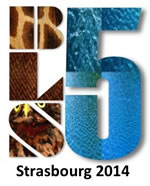|
|
|
Workshops > WS6Linking marine predator behavior to prey fields
Womble Jamie 1, Lea Mary-Anne 2
1: PO Box 211382, Auke Bay, Alaska 99821 (jamienwomble@hotmail.com) 2: Institute for Marine and Antarctic Studies, Australia (MaryAnne.Lea@utas.edu.au)
The overarching goal of this workshop is to provide a forum for the presentation and discussion of how to link marine predator foraging behavior to prey fields at various temporal and spatial scales. Prey distribution (depth, density, patch characteristics, biomass) is a primary factor influencing the distribution and behavior of marine predators; however, quantifying the prey fields of marine predators can be challenging for several reasons. First, marine predators may forage over large spatial and temporal scales making it difficult to monitor both predator and prey behavior simultaneously. Second, techniques for monitoring prey fields require may require specialized technology, equipment, and expertise. Third, integrating data streams from marine predator diving behavior with empirical data on prey fields can be challenging given the complexity of the data streams and the scales at which they are collected. Our workshop will address specific questions related to (1) tools and techniques (hydroacoustic surveys, stationary buoys, animal-borne cameras/sensors, tag technology and attachment methods) that can be used quantify marine predator prey fields, (2) determining appropriate scales (temporal, spatial) for monitoring prey fields, and (3) analytical methods (and challenges) for integrating data streams from marine predator behavior (diving, movement) with empirical data on prey fields.
Tracking fish: an overview of tag technology and attachment methods Julie Nielsen
Using acoustics to inform on the nature of species interactions with a roving marine predator in two large marine ecosystems Damian Lidgard Bowen WD, Jonsen ID, Block B, Wilson S, Stokesbury M, Iverson SJ
Using animal-borne videos and accelerometers to examine the prey capture of marine predators Akinori Takahashi
Understanding how the foraging strategies and energetic consequences of the world's largest bulk-filter feeder change as a function of prey distribution and density Jeremy Goldbogen Elliot Hazen, Ari Friedlander
An individual behavioral model of group foraging for patchy prey Colin Ware
Listening for your supper: Eavesdropping marine predator opportunities presented by prey generated noise Ben Wilson
|


